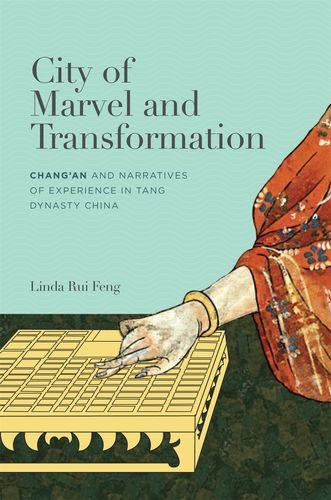

Most ebook files are in PDF format, so you can easily read them using various software such as Foxit Reader or directly on the Google Chrome browser.
Some ebook files are released by publishers in other formats such as .awz, .mobi, .epub, .fb2, etc. You may need to install specific software to read these formats on mobile/PC, such as Calibre.
Please read the tutorial at this link: https://ebookbell.com/faq
We offer FREE conversion to the popular formats you request; however, this may take some time. Therefore, right after payment, please email us, and we will try to provide the service as quickly as possible.
For some exceptional file formats or broken links (if any), please refrain from opening any disputes. Instead, email us first, and we will try to assist within a maximum of 6 hours.
EbookBell Team

4.3
98 reviewsDuring the Tang dynasty, the imperial capital of Chang’an (present-day Xi’an) was unrivaled in its monumental scale, with about one million inhabitants dwelling within its walls. It was there that one of the most enduring cultural and political institutions of the empire―the civil service examinations―took shape, bringing an unprecedented influx of literati men to the city seeking recognition and official status by demonstrating their literary talent. To these examination candidates, Chang’an was a megalopolis, career launch pad, and most importantly, cultural paradigm. As a multifaceted lived space, it captured the imaginations of Tang writers, shaped their future aspirations, and left discernible traces in the writings of this period.
City of Marvel and Transformation brings this cityscape to life together with the mindscape of its sojourner-writers. By analyzing narratives of experience with a distinctive metropolitan consciousness, it retrieves lost connections between senses of the self and a sense of place. Each chapter takes up one of the powerful shaping forces of Chang’an: its siren call as a destination; the unforeseen nooks and crannies of its urban space; its potential as a “media machine” to broadcast images and reputations; its demimonde―a city within a city where both literary culture and commerce took center stage. Without being limited to any single genre, specific movement, or individual author, the texts examined in this book highlight aspects of Chang’an as a shared and contested space in the collective imagination. They bring to our attention a newly emerged interval of social, existential, and geographical mobility in the lives of educated men, who as aspirants and routine capital-bound travelers learned to negotiate urban space.
Both literary study and cultural history, City of Marvel and Transformation goes beyond close readings of text; it also draws productively from research in urban history, anthropology, and studies of space and place, building upon the theoretical frameworks of scholars such as Michel de Certeau, Henri Lefebvre, and Victor Turner. It is a welcome addition to the growing body of scholarship in Chinese studies on the importance of cities and city life. Students and scholars of premodern China will find new ways to understand the collective concerns of the lettered class, as well as new ways to understand literary phenomena that would eventually influence vernacular tales and the Chinese novel. By asking larger questions about how urban sojourns shape subjectivity and perceptions, this book will also attract a wide range of readers interested in studies of personhood, spatial practice, and cities as living cultural systems in flux, both ancient and modern.